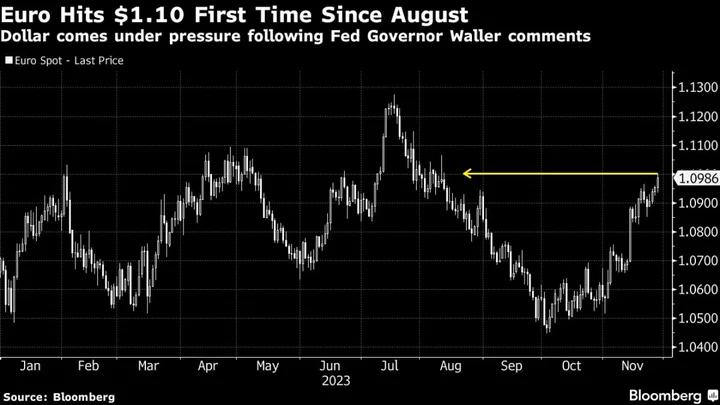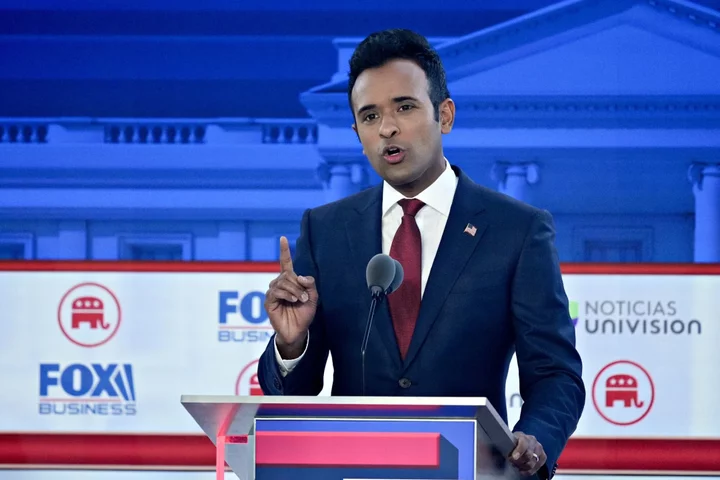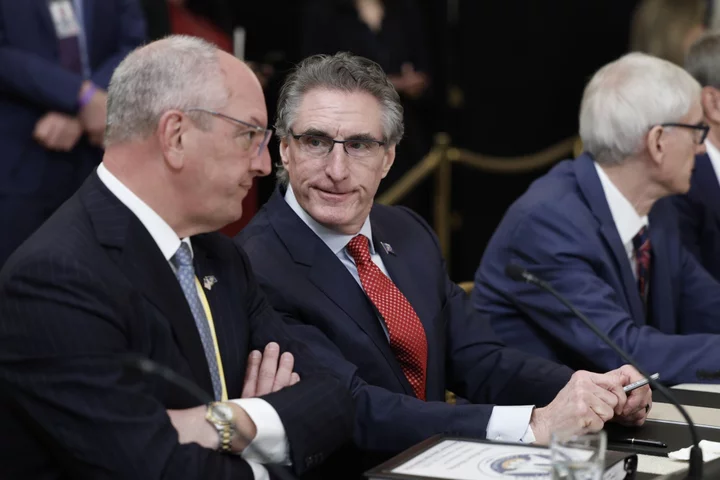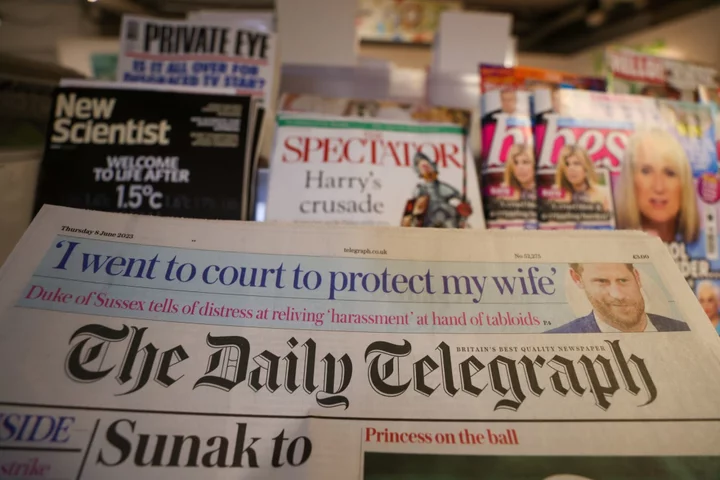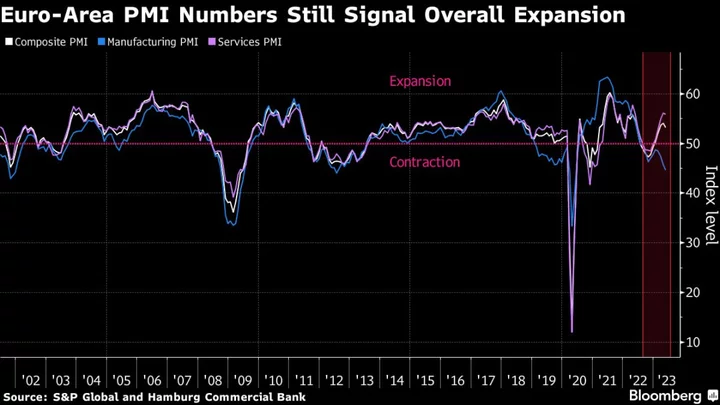The euro advanced to $1.10 for the first time since August as the dollar sustained its weakening trend.
The common currency was up as much as 0.5% on Tuesday, marking its fourth-straight session of gains. This comes as the Bloomberg Dollar Spot Index suffers its biggest monthly drop in one year, with markets betting the Federal Reserve is finished with its interest-rate hiking cycle.
After nearing parity with the dollar in early October, the euro has rebounded from a low of $1.05 to climb 5%. Yet, currency analysts at firms including ING Bank NV, JPMorgan Chase & Co. and Societe Generale SA warn that it is too early to bet on a sustained weakening in the dollar and the euro remains to be vulnerable to paring its recent gains.
“EUR/USD should remain almost solely a function of USD moves and Fed rate expectations,” said Francesco Pesole, a FX strategist at ING. “We are not convinced the pair has enough backing on the rates side to trade sustainably above 1.10 and favor instead a correction below 1.0900 in the coming days.”
Still, the debate over rates and dollar weakness is live, with markets pricing the Fed and the European Central Bank easing interest rates by about a full percentage point next year.
Fed Governor Christopher Waller said Tuesday that he is he was “increasingly confident” that the Fed’s interest-rate policy is high enough to bring inflation back to the central bank’s 2% target, giving fresh impetus to sending Treasury yields and the dollar lower.
Seasonal patterns also suggest dollar weakness is usually the case before year-end. Since 2005, the Bloomberg dollar index has lost an average of 0.4% in December. The drop has become more pronounced over the past decade, with the currency falling an average of 0.6% and making the last month worst of the year.
But Kit Juckes, chief foreign-exchange strategist at Societe Generale in London, said he won’t be surprised if the euro drifts back to 1.0950, noting the euro move against the dollar has also been helped by month-end flows.
--With assistance from Edward Bolingbroke and George Lei.
(Updates markets, adds contexts and comments from analysts throughout)

